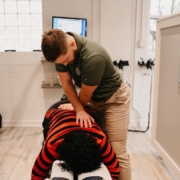5 Benefits of Chiropractic Care for Runners
What is Chiropractic Care?
Chiropractic care is a form of alternative medicine that focuses on the diagnosis, treatment, and prevention of musculoskeletal system disorders, especially of the spine. For runners, chiropractic care can be an effective way to prevent injuries, speed up recovery, and improve overall performance.
Runners often put a lot of stress on their bodies, especially on their joints and muscles. The repetitive motions involved in running can cause muscle imbalances, joint misalignments, and other musculoskeletal issues. These problems can lead to pain, discomfort, reduced range of motion, and ultimately, injury.
Benefits of Chiropractic Care for Runners
Chiropractic care can help runners overcome these issues by providing targeted adjustments, manipulations, and other therapies. Here are some of the ways that chiropractic care can benefit runners:
- Improved joint function: Chiropractic adjustments can help realign joints that may have shifted out of place due to repetitive motions. This can help reduce pain, improve range of motion, and prevent further damage.
- Enhanced muscle flexibility: Chiropractic care can help improve muscle flexibility by loosening tight muscles and reducing muscle tension. This can help reduce the risk of injury and improve overall performance.
- Faster recovery: Chiropractic care can help speed up recovery time by improving circulation, reducing inflammation, and promoting healing.
- Better posture: Chiropractic care can help correct postural imbalances that can contribute to pain and discomfort while running.
- Customized treatment plans: Chiropractors can develop individualized treatment plans for runners based on their unique needs and goals. This can help ensure that runners receive the care they need to stay healthy and perform at their best.
Find the Right Chiropractor for You
If you are a runner and are considering chiropractic care, it is important to find a qualified chiropractor who has experience working with runners. Your chiropractor should also work closely with your primary care physician and any other healthcare providers you see.
In addition to chiropractic care, runners can also benefit from other forms of alternative medicine, such as massage therapy, acupuncture, and yoga. By combining these therapies with regular exercise, proper nutrition, and adequate rest, runners can achieve optimal health and performance.










